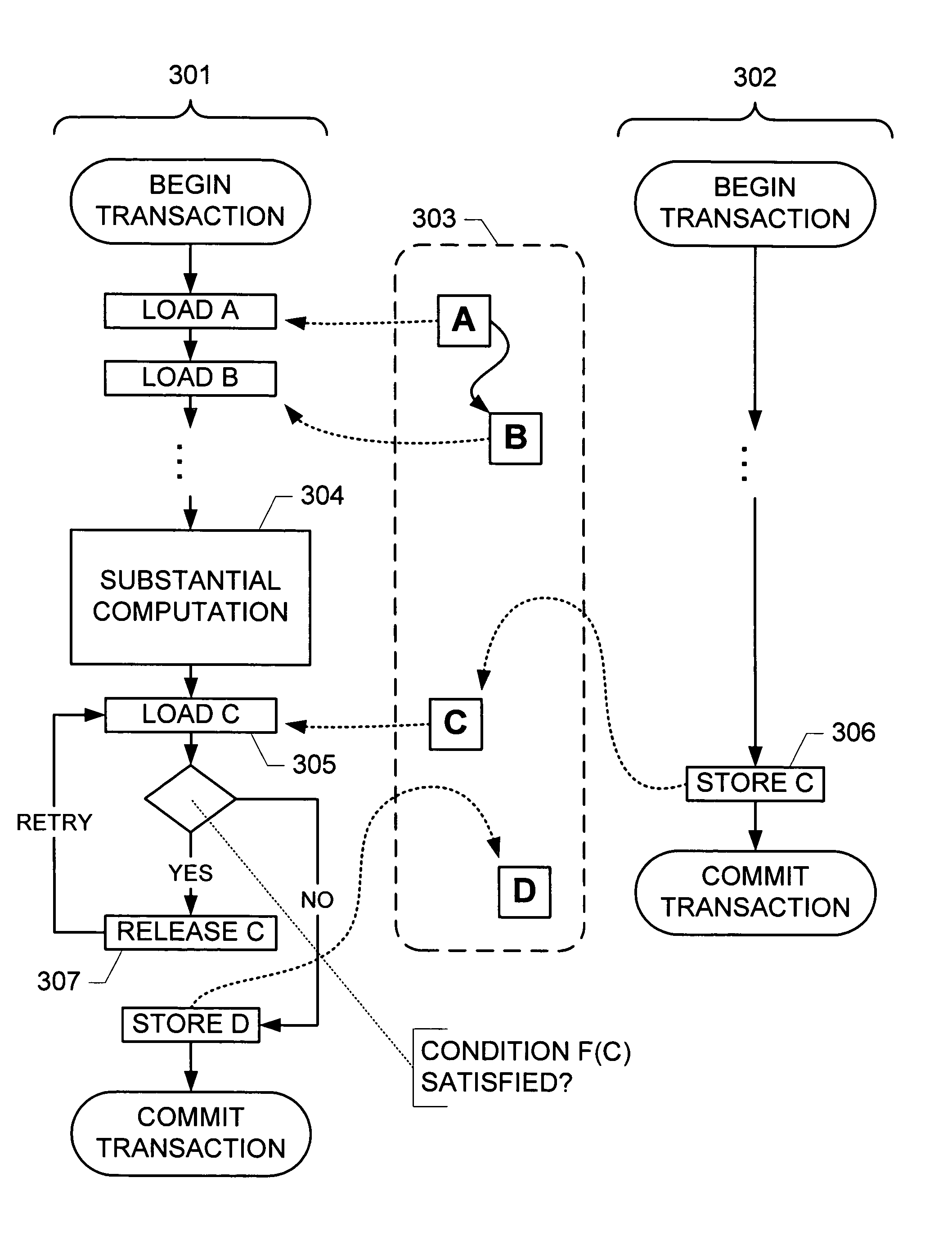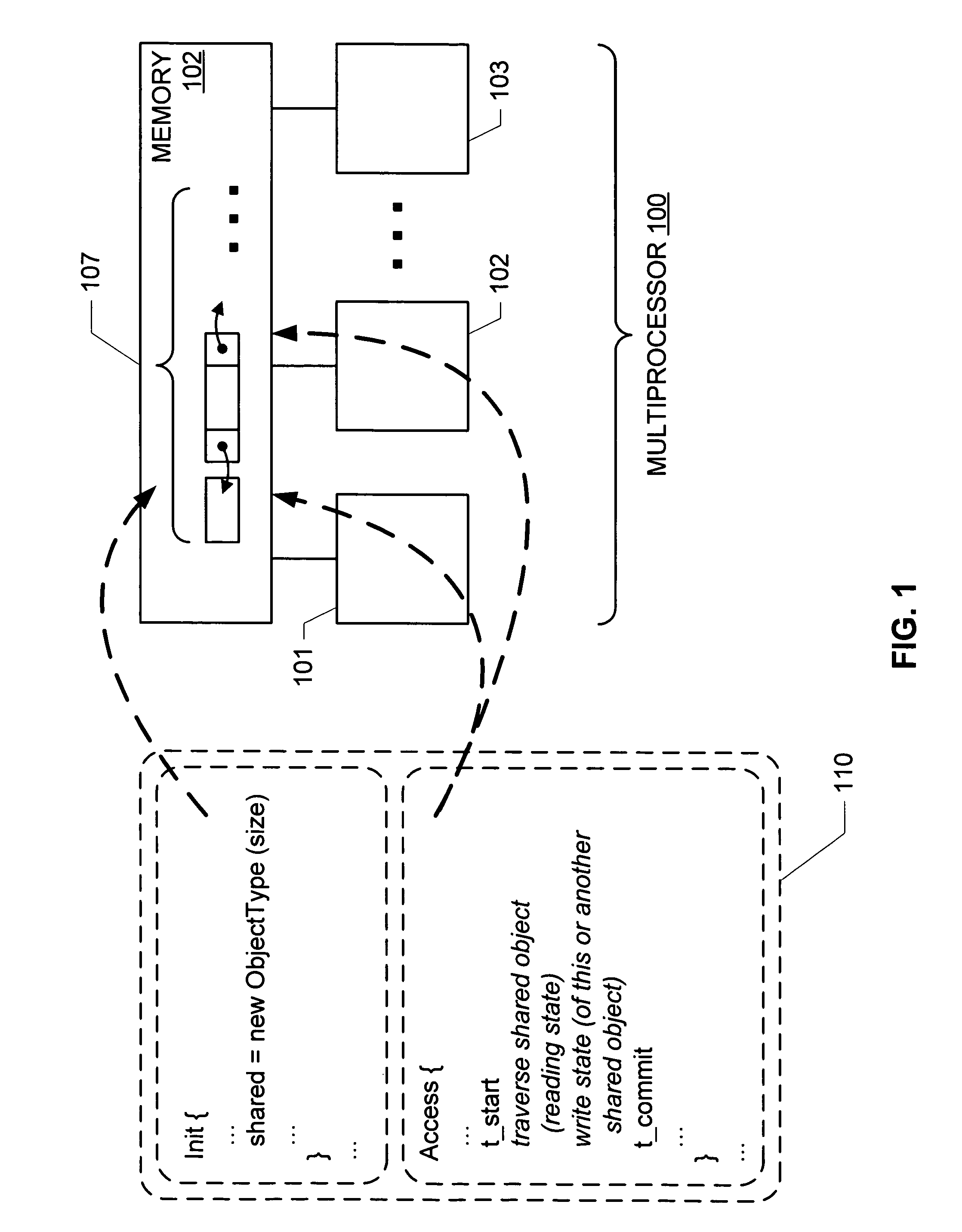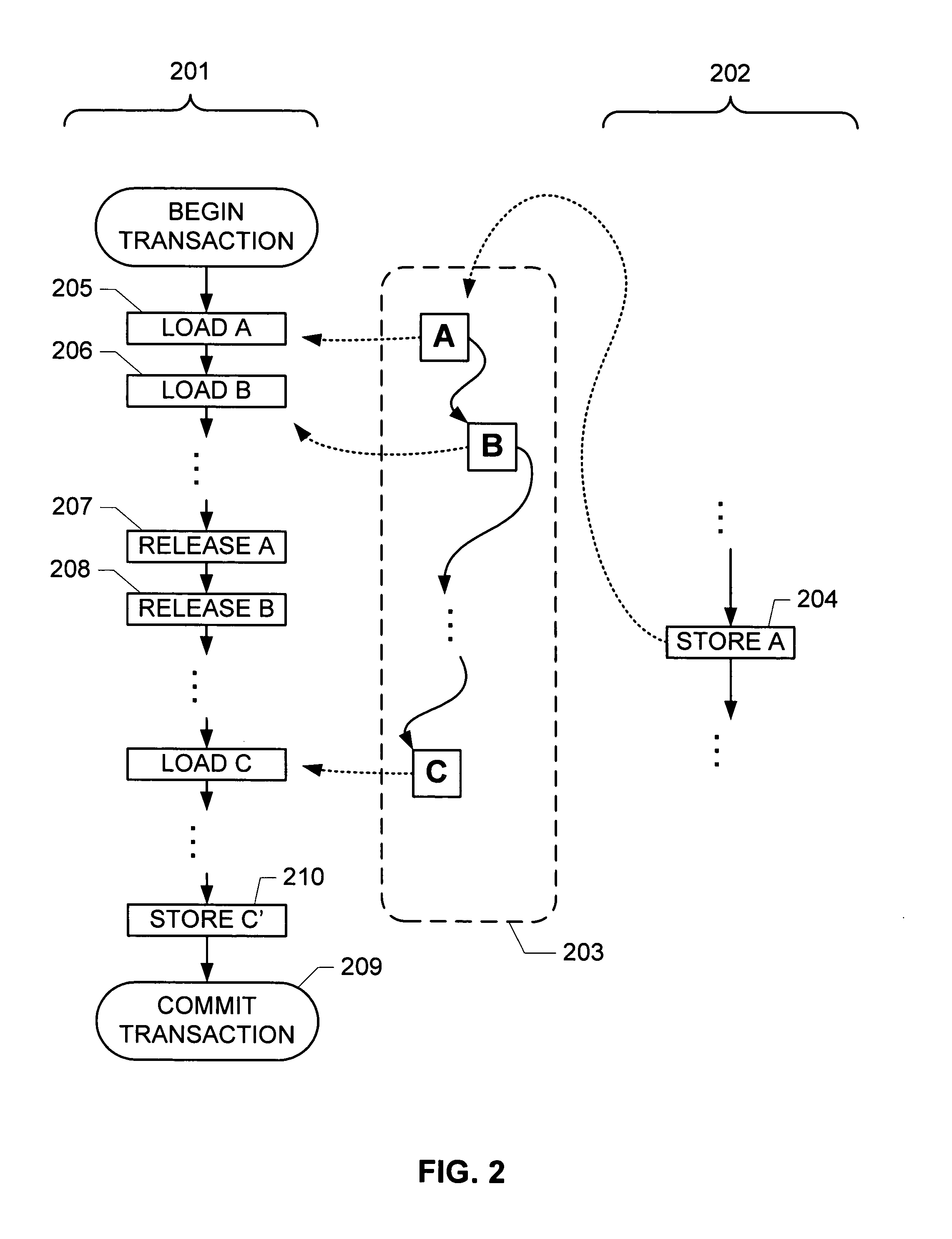Technique to allow a first transaction to wait on condition that affects its working set
a technology of condition and transaction, applied in the direction of multi-processor programming, program control, instruments, etc., can solve the problems of affecting the working affecting the work set of the first transaction, and requiring other threads to wait, so as to achieve simple and convenient coordination facilities, the effect of saving computation effor
- Summary
- Abstract
- Description
- Claims
- Application Information
AI Technical Summary
Benefits of technology
Problems solved by technology
Method used
Image
Examples
Embodiment Construction
)
[0020]A versatile mechanism has been developed for coordinating amongst threads of a multithreaded computation that employs a transactional memory facility with early release capabilities. In general, transactional memory with early release may be implemented as part of a memory subsystem (e.g., using hardware and / or other facilities not entirely visible to application code executing on a processor), using software constructs that provide the illusion of a transactional memory (e.g., via a defined calling interface for transactional access), or using a hybrid system that combines hardware and software support.
[0021]In such cases, the transactional memory with early release may be viewed (e.g., by software that exploits it) in terms of an interface. That interface may, in general, be implemented using any of a variety of appropriate transaction encodings (e.g., using a defined calling interface, using distinct transactional instructions defined by an instruction set architecture, IS...
PUM
 Login to View More
Login to View More Abstract
Description
Claims
Application Information
 Login to View More
Login to View More - R&D
- Intellectual Property
- Life Sciences
- Materials
- Tech Scout
- Unparalleled Data Quality
- Higher Quality Content
- 60% Fewer Hallucinations
Browse by: Latest US Patents, China's latest patents, Technical Efficacy Thesaurus, Application Domain, Technology Topic, Popular Technical Reports.
© 2025 PatSnap. All rights reserved.Legal|Privacy policy|Modern Slavery Act Transparency Statement|Sitemap|About US| Contact US: help@patsnap.com



